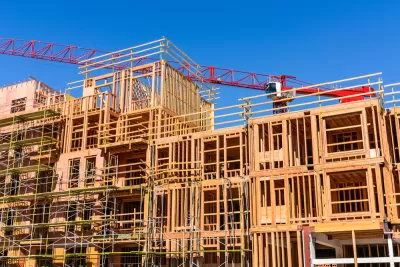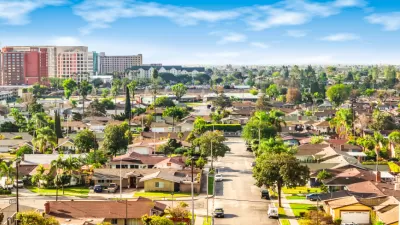Meanwhile, cities say the state’s housing needs assessment sets impossible goals for affordable housing production.

California’s affordable housing crisis continues to create conflict between cities and the state, which recently implemented stricter enforcement measures for its Regional Housing Needs Assessment, an evaluation conducted every eight years that calculates the state’s housing needs. “The state determined the six-county region covered by the Southern California Association of Governments, or SCAG, needs 1.34 million new homes by the end of the decade, an average of nearly 168,000 homes per year, adding enough housing for a population roughly the size of Chicago.”
According to an article by Jeff Collins in The Orange County Register, “South Pasadena remains an example of how some Southern California cities are failing to adequately plan for future housing needs, pro-housing advocates say.” The article cites examples of unrealistic projections, which include sites that have little chance of redevelopment. “South Pasadena’s first draft housing plan envisioned building 49 homes on the 1.2-acre site that now houses City Hall and the police and fire stations. The plan was dropped in the revised ‘housing element’ released on April 21 because the city had no firm plans for relocating City Hall.” Collins notes that the city revised its plan in April to reflect more realistic projections.
In the past, the state rubber-stamped city housing plans even when they had a low chance of meeting their targets. “Now, new laws require cities to fully document why each site has a reasonable chance of getting developed by October 2029, the end of the current planning cycle. New measures also require municipalities to include plans for low-income housing in ‘high resource’ affluent neighborhoods and to take steps to undo historic patterns of segregation.”
The issue goes far beyond South Pasadena. “A 2021 analysis of 10 draft housing elements by Mapcraft Labs concluded that about 70% of proposed housing sites were unlikely to provide the projected number of units by the end of the decade.”
City leaders, meanwhile, argue that state allocations set unrealistic goals. “We are a built-out city, and our numbers went from 63 (homes) in the last cycle to 2,067,” said South Pasadena Community Development Director Angelica Frausto-Lupo.
FULL STORY: Southern California housing plans contain ‘fake sites,’ lack analysis, critics say

Alabama: Trump Terminates Settlements for Black Communities Harmed By Raw Sewage
Trump deemed the landmark civil rights agreement “illegal DEI and environmental justice policy.”

Study: Maui’s Plan to Convert Vacation Rentals to Long-Term Housing Could Cause Nearly $1 Billion Economic Loss
The plan would reduce visitor accommodation by 25% resulting in 1,900 jobs lost.

Planetizen Federal Action Tracker
A weekly monitor of how Trump’s orders and actions are impacting planners and planning in America.

Wind Energy on the Rise Despite Federal Policy Reversal
The Trump administration is revoking federal support for renewable energy, but demand for new projects continues unabated.

Passengers Flock to Caltrain After Electrification
The new electric trains are running faster and more reliably, leading to strong ridership growth on the Bay Area rail system.

Texas Churches Rally Behind ‘Yes in God’s Back Yard’ Legislation
Religious leaders want the state to reduce zoning regulations to streamline leasing church-owned land to housing developers.
Urban Design for Planners 1: Software Tools
This six-course series explores essential urban design concepts using open source software and equips planners with the tools they need to participate fully in the urban design process.
Planning for Universal Design
Learn the tools for implementing Universal Design in planning regulations.
Caltrans
Smith Gee Studio
Institute for Housing and Urban Development Studies (IHS)
City of Grandview
Harvard GSD Executive Education
Toledo-Lucas County Plan Commissions
Salt Lake City
NYU Wagner Graduate School of Public Service





























